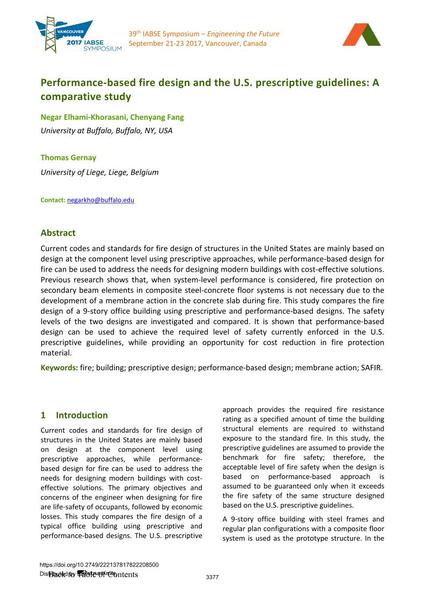Performance-based fire design and the U.S. prescriptive guidelines: A comparative study

|
|
|||||||||||
Bibliographic Details
| Author(s): |
Negar Elhami-Khorasani
(University at Buffalo, Buffalo, NY, USA)
Chenyang Fang (University at Buffalo, Buffalo, NY, USA) Thomas Gernay (University of Liege, Liege, Belgium) |
||||
|---|---|---|---|---|---|
| Medium: | conference paper | ||||
| Language(s): | English | ||||
| Conference: | IABSE Symposium: Engineering the Future, Vancouver, Canada, 21-23 September 2017 | ||||
| Published in: | IABSE Symposium Vancouver 2017 | ||||
|
|||||
| Page(s): | 3377-3383 | ||||
| Total no. of pages: | 7 | ||||
| Year: | 2017 | ||||
| DOI: | 10.2749/222137817822208500 | ||||
| Abstract: |
Current codes and standards for fire design of structures in the United States are mainly based on design at the component level using prescriptive approaches, while performance-based design for fire can be used to address the needs for designing modern buildings with cost-effective solutions. Previous research shows that, when system-level performance is considered, fire protection on secondary beam elements in composite steel-concrete floor systems is not necessary due to the development of a membrane action in the concrete slab during fire. This study compares the fire design of a 9-story office building using prescriptive and performance-based designs. The safety levels of the two designs are investigated and compared. It is shown that performance-based design can be used to achieve the required level of safety currently enforced in the U.S. prescriptive guidelines, while providing an opportunity for cost reduction in fire protection material. |
||||
| Keywords: |
performance-based design membrane action building fire prescriptive design SAFIR
|
||||
